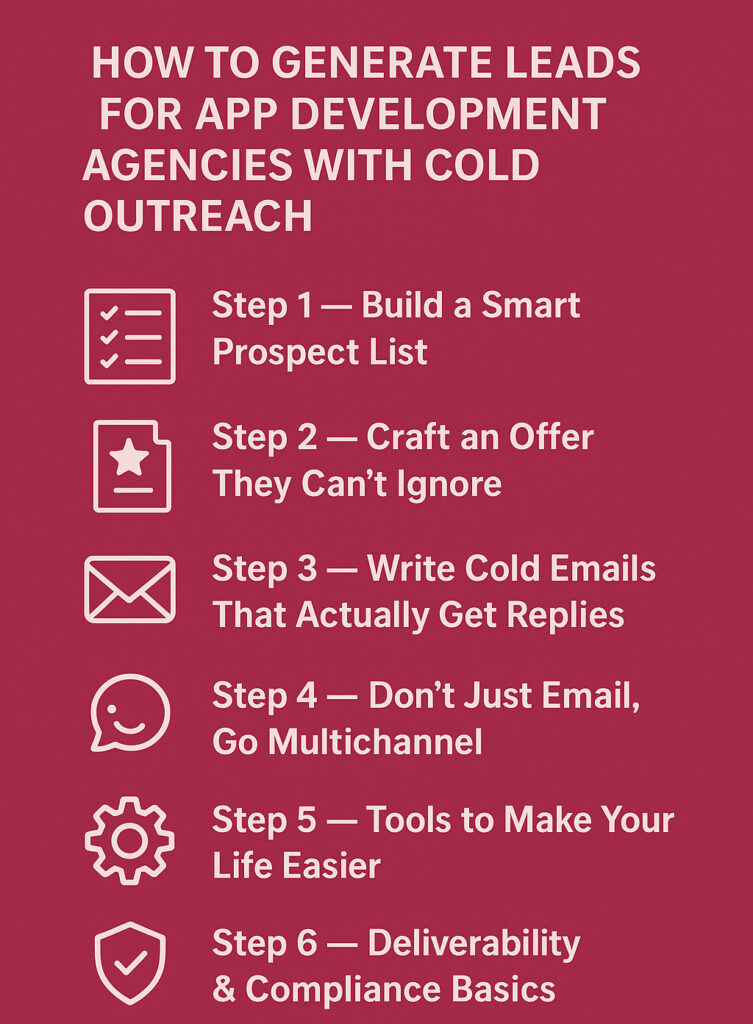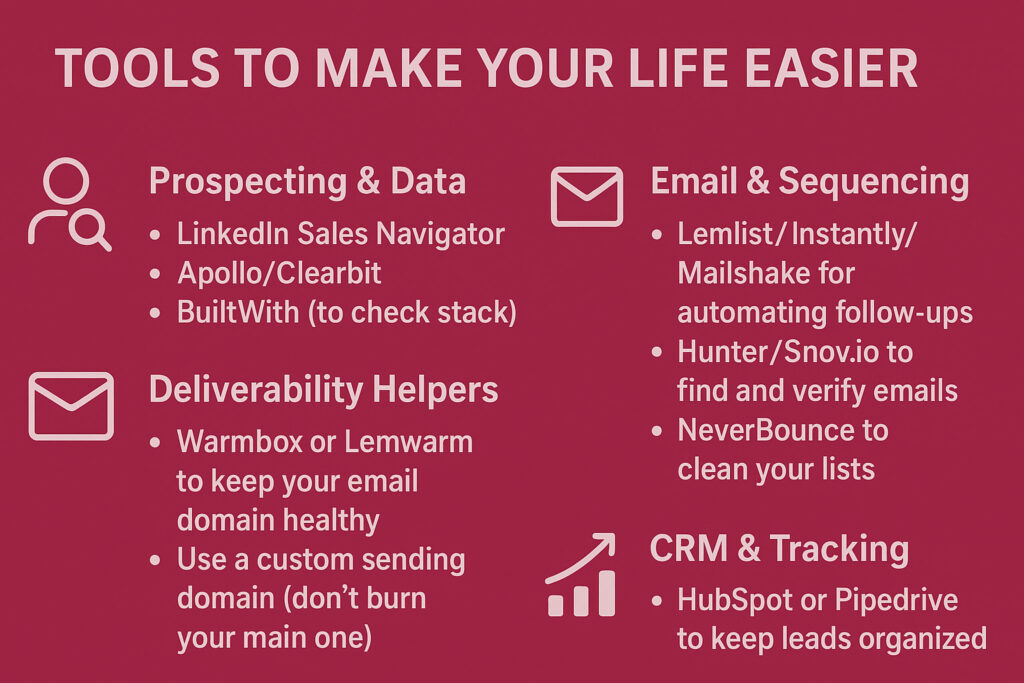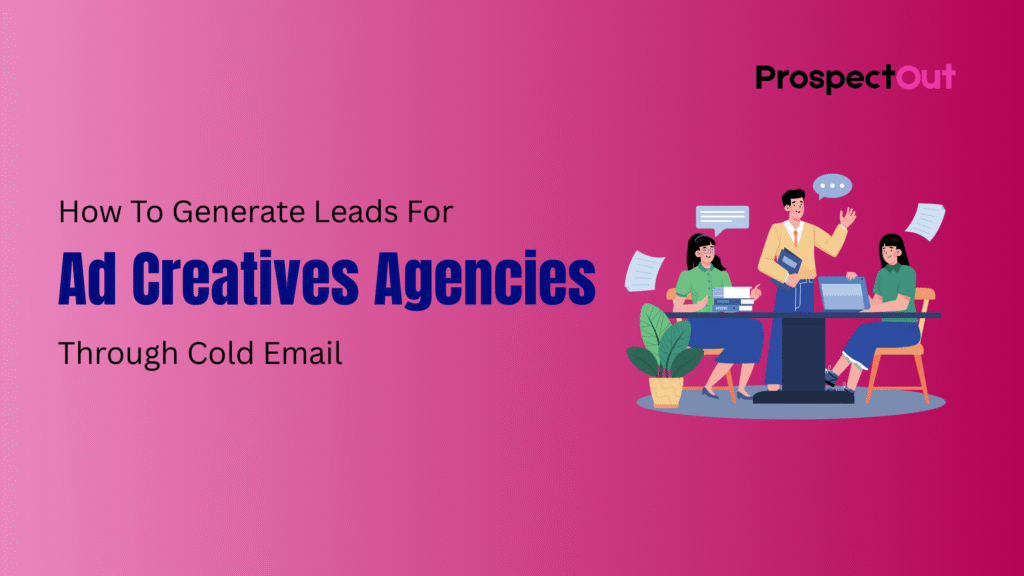
Running an app development agency isn’t easy. You’ve got talented developers, great design ideas, maybe even some cool case studies under your belt. But the pipeline?
Dry as a desert.
Sure, referrals and word-of-mouth feel nice… until they stop coming in.
Paid ads?
Expensive and hit-or-miss. That’s why most agencies eventually ask: “How do we actually reach new clients without burning money?”
The answer, love it or hate it, is cold outreach. Done wrong, it feels spammy. Done right, it can land you meetings with startups that just raised a round, e-commerce brands desperate for a mobile app, or even enterprise teams looking for extra dev muscle.
Grab a coffee, and let’s break down exactly how to make cold outreach work for app development agencies.
Who Cold Outreach Actually Works For (Your ICPs)
Not every business is worth contacting. You’ll waste time if you don’t know who you’re talking to. That’s where ideal client profiles (ICPs) come in. Let’s break down a few that are a sweet spot for app agencies.
Early-Stage Startups (MVP builders)
- Size: 1–20 employees, pre-seed to Series A
- Who to talk to: Founders, CTOs, Heads of Product
- Pain: They need an MVP yesterday, investors are breathing down their necks, and they don’t have an in-house team yet.
- Trigger: They just raised funding, joined an accelerator, or teased a launch.
SMBs / E-commerce Brands
- Size: 20–500 employees
- Who to talk to: Head of Ops, Growth Managers, COOs.
- Pain: They’re losing customers because their mobile experience sucks, or competitors launched a flashy new app.
- Trigger: Seasonal pushes, new product lines, or competitor moves.
Enterprises Needing Extra Dev Power
- Size: 500+ or enterprise divisions
- Who to talk to: VP Engineering, Director of Product, Program Managers
- Pain: Their dev team is already swamped, deadlines are tight, and security is a nightmare.
- Trigger: New contracts, mergers, or compliance needs.
👉 If you only take one thing away from this section: don’t blast emails to everyone with “CTO” in their title. Aim for these ICPs and you’ll already be ahead.
Why Cold Outreach Still Works
Think about it: the people you want to reach aren’t hanging out Googling “hire app dev agency.” They’re buried in product roadmaps and investor decks. Cold outreach is about tapping them on the shoulder at the right moment.
Here’s why it still works in 2025:
- You can get ultra-targeted with data (funding, tech stack, job postings).
- Tools make personalization at scale way easier than it used to be.
- Most agencies don’t bother doing it right. It meaning there’s less competition in inboxes than you’d expect.
So yeah, it works. If you play it smart.
How to Generate Leads for App Development Agencies with Cold Outreach?
I usually followed the steps to generate leads for app development agencies,

Step 1: Build a Smart Prospect List
This is the grunt work, but it’s where 80% of your success comes from.
Where to Find Leads
- LinkedIn Sales Navigator — hands down the best for filtering startups, e-com brands, or specific roles.
- Apollo / Clearbit / ZoomInfo — for enrichment (emails, company size, tech stack).
- BuiltWith / Crunchbase — spot what stack they’re using or if they just raised money.
Signals That Someone’s Worth Contacting
- Funding news → means budget is coming.
- Job postings for devs → they’re struggling to hire.
- New product launch → they’ll need support scaling.
Pro tip: don’t just grab a “list of 500 CTOs.” Get specific signals that show they actually need you.
Step 2: Craft an Offer They Can’t Ignore
Most cold emails die because they’re basically: “We build apps. Need help?” Snooze.
Instead, package something low-commitment and high-value.
Offer Ideas That Convert
- Free 30-min tech audit → “We’ll spot 3 quick fixes you can use right now.”
- 2-week pilot sprint → low-risk way to test working together.
- App security snapshot → instant value for enterprise teams.
- Onboarding UX review → show how to boost retention fast.
- Competitor feature gap analysis → nothing grabs attention like “Here’s what your rival has that you don’t.”
See the difference? You’re not asking them to marry you. You’re offering coffee first.
Step 3: Write Cold Emails That Actually Get Replies
Alright, here’s the fun part: email writing. Let’s talk templates. Keep them short, keep them human, and for the love of all things, don’t sound like a robot.
Startup Founder Email (MVP angle)
Subject: Quick MVP idea for [Company]
Hi [First name], congrats on [funding/news/product launch]. I’m [your name] from [agency]. We help startups go from idea → prototype in 4 weeks.
If you’re open, I’ll run a free 30-minute audit and share 3 quick wins you can use right now. No sales pitch. Want me to send over a few ideas?
– [Your name]
SMB / E-commerce Email
Subject: Reduce cart drop-offs in your app (15-min idea)
Hi [First name], I noticed [Company]’s app. We’ve helped e-commerce brands like [X] increase retention by 18% in 90 days.
If you’d like, I’ll run a quick onboarding review and send back 3 prioritized fixes you could ship this month. Open to a 15-min chat?–
Enterprise Email (Pilot angle)
Subject: Pilot idea for [Company]’s [specific program]
Hi [First name], we’ve worked with enterprise teams to deliver secure integrations (OAuth, SSO) in 3–4 weeks.
If you’re evaluating partners, we can run a 2-week pilot (with a money-back clause) so you can validate before scaling. Interested in a quick chat?
– [Your name]
Follow-Up Formula
- Follow-up 1 (3 days): “Just circling back, did you see my note about the free audit?”
- Follow-up 2 (5–7 days): “One idea we tested for [similar client] cut dev time by 30%. Want me to share the details?”
Most replies happen after the second or third touch. Don’t give up after one email.
Step 4: Don’t Just Email, Go Multichannel
Cold outreach isn’t just email anymore. You’ll boost replies if you add:
- LinkedIn: connect with a short note. Example: “Hey [First name], we help startups ship MVPs fast — happy to share a 1-page checklist we use. Mind if I send it over?”
- Calls: one polite voicemail after email #2 can make a difference.
- Content follow-ups: send a one-pager, case study, or even a short Loom video.
Think of it like dating. Email is the text. LinkedIn is the coffee shop run-in. A call is the quick “Hey, saw your profile.” It all works better together.
Step 5: Tools to Make Your Life Easier
Let’s be honest, nobody’s running cold outreach with just Gmail anymore. You’ll need a small stack:

Prospecting & Data
- LinkedIn Sales Navigator
- Apollo / Clearbit
- BuiltWith (to check stack)
Email & Sequencing
- Lemlist / Instantly / Mailshake for automating follow-ups
- Hunter / Snov.io to find and verify emails
- NeverBounce to clean your lists
Deliverability Helpers
- Warmbox or Lemwarm to keep your email domain healthy
- Use a custom sending domain (don’t burn your main one)
CRM & Tracking
- HubSpot or Pipedrive to keep leads organized
- Google Sheets + Zapier if you’re bootstrapping
Step 6: Deliverability & Compliance Basics
Don’t get flagged as spam. A few ground rules:
- Keep emails under 120 words.
- Avoid spammy phrases (“guaranteed,” “100% free,” “limited time”).
- Always include a way to opt out.
- Clean your lists regularly.
- Warm up new domains before blasting.
Step 7: What to Test in Your First 90 Days
Start small. Don’t send 5,000 emails in week one.
- Test 2–3 subject lines per ICP.
- Rotate offers (audit vs pilot vs competitor gap).
- Track reply rate, meeting rate, deal rate.
- Double down on what’s working, cut what’s not.
Wrapping It Up (and Your Next Step)
Cold outreach isn’t magic, but it works if you approach it thoughtfully. Find the right ICPs, craft offers that feel valuable, keep your emails concise, and follow up in a human manner.
Start with 50–100 targeted prospects, test one ICP and one offer, and you’ll quickly see patterns. From there, you can scale.
So, are you ready to stop waiting for referrals and start booking calls? Your next step: build that first prospect list and send your first 20 personalized emails this week.


